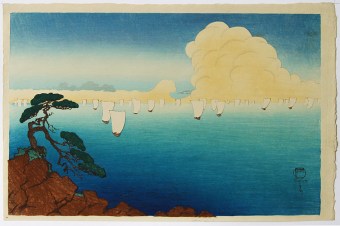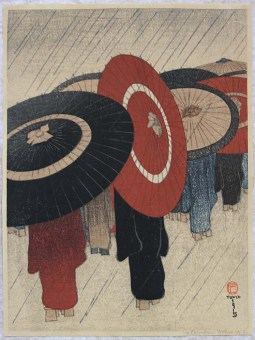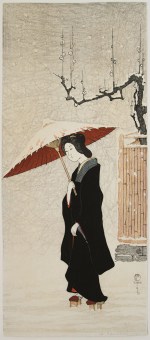Friedrich CAPELARI (1884 – 1950)
CAPELARI
Ukiyo-e printing was revitalized based on the collaboration of Friedrich Capelari with the publisher Shozaburo Watanabe in 1915. This new style was called Shin Hanga prints (New Prints). The new prints revitalized ukiyoe-e art and gave a kick-off to also Japanese artists to recall the art of Ukiyo-e like Shinsui Ito.
Elisabeth Keith (Artist from UK) worked also with Watanabe. Helen Hyde (USA) even studied together with Emil Orlik woodblock printing at the woodblock print workshops in Japan. Emil Orlik is well known for his Japanese themed artworks and his intensive studies of Japanese woodblock prints. Friedrich (Fritz) Capelari is the other famous Austrian artists how lived in Japan during Meiji and Taisho Period, who made a big impact on Japanese woodblock printing but is generally less known.
About Capelari’s woodblock prints
The currently confirmed woodblock prints by Capelari published by Watanabe are mainly landscape and beauty prints which take Japan as their subject. Two prints showing white birds on a pomegranate tree in day and in night are the single kacho-e (Birds and Flowers) Capelari made.
In the 1923 earthquake the existing woodblocks, which got stored at the Watanabe shop, were destroyed by a fire. There are none or hardly any woodblocks of Capelari’s designs left. Also very rare is his last print, Pines (Near Yotsuya Mitsuke).
Capelari's study of ukiyo-e is evident in his works, whether those with long, hanging scroll like formats, or those which draw their inspiration from such Edo period ukiyo-e artists as Harunobu and Hokusai. His stylized and simplified forms and the graphic quality found in his figural expression provide a vivid and modern sense of his position as foreign ukiyo-e artist.
How did a young Austrian artist get to Japan?
Among Capelaris colleagues at the Viennese Art Academy, in Griepenkerls class, where a group of young students from Japan, who invited Capelari to visit Japan. In 1911 he found a sponsor for the trip: the General Director of Lloyd (Austrias largest steamship company with regular service between Triest, that time part of Austrian-Hungary Monarchy, and Yokohama, Japan.) The company offered Capelari to paint the streets and harbor of Shanghai for the Director’s office as a service in return.
On this occasion Capelari met Austrian diplomats and they introduced him to the Japanese upper class. This helped him to make his first income as a painter in Japan.
A surprise success story
It is certainly one of the most astonishing turns of events in history of this artform that the Austrian, Capelari, influenced the renewal of woodblock printing in Japan. Shozaburo Watanabe, founder of the Watanabe Color Print Co, saw Capelari’s landscape paintings in a Tokyo store and realized that his style was perfectly adaptable into the graphic art of woodblock prints. Because of World War I Capelari couldn’t leave the country from 1914 - 1918. During this time Capelari studied the art of ukiyo-e intensively. Eventually Capelari and Watanabe met and experimented as a team with the creation and publication of Shin-hanga, the new style of woodblock prints.
Sailboats at Matsushima
(FC224)
Returning Home
(I708)
Woman in Snow
(J258)





